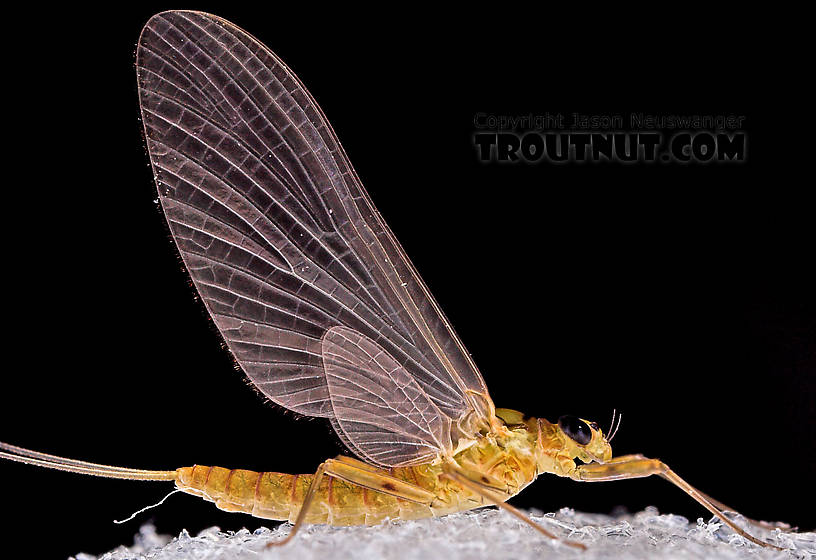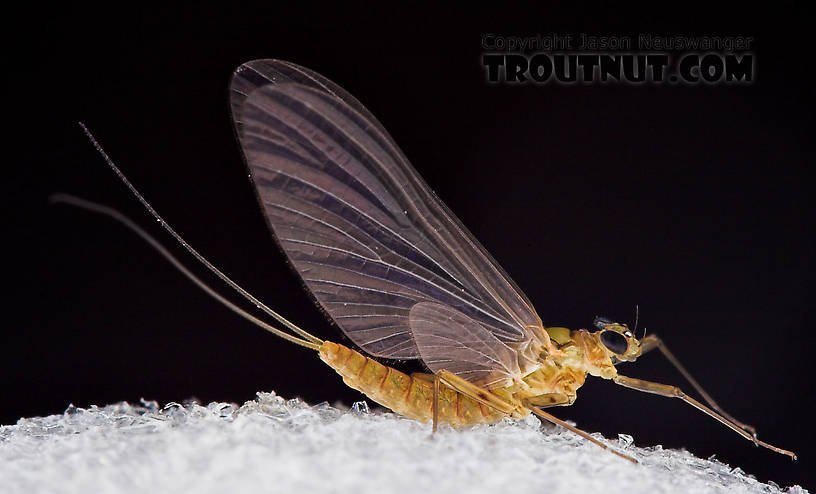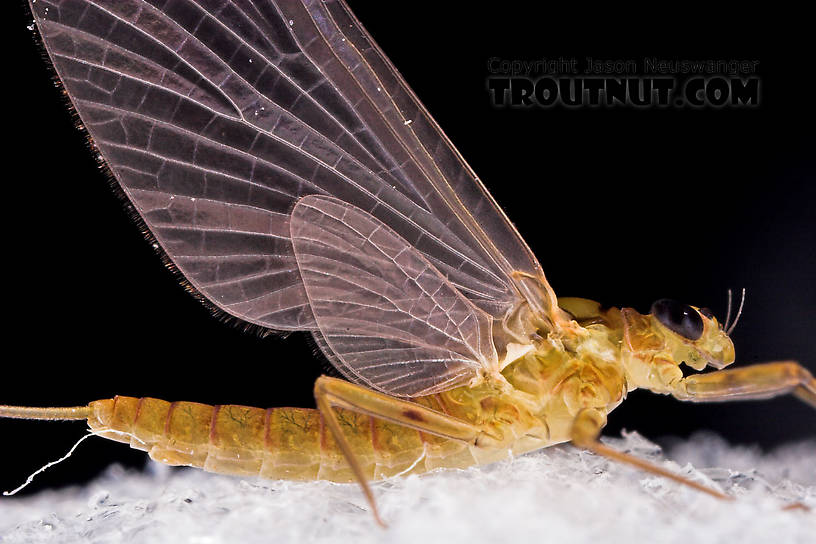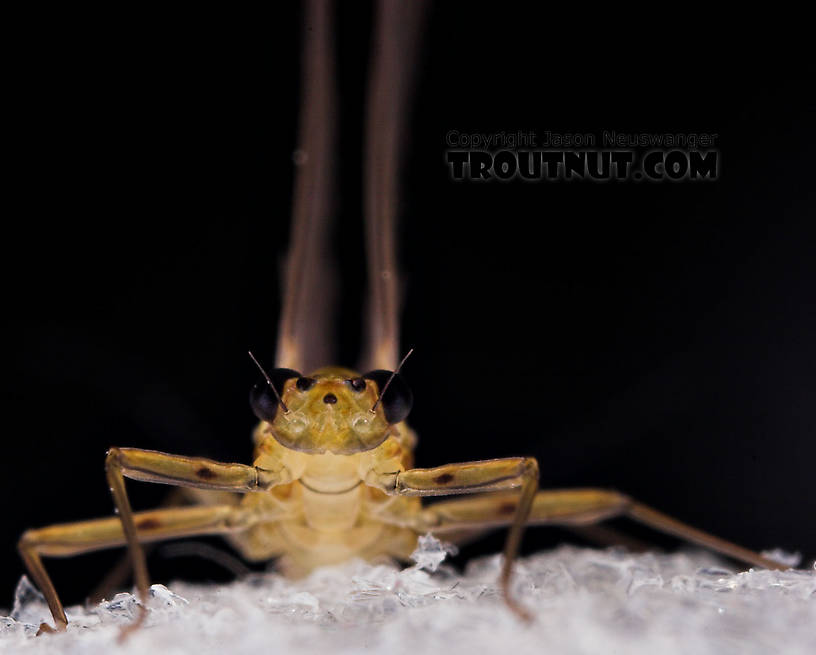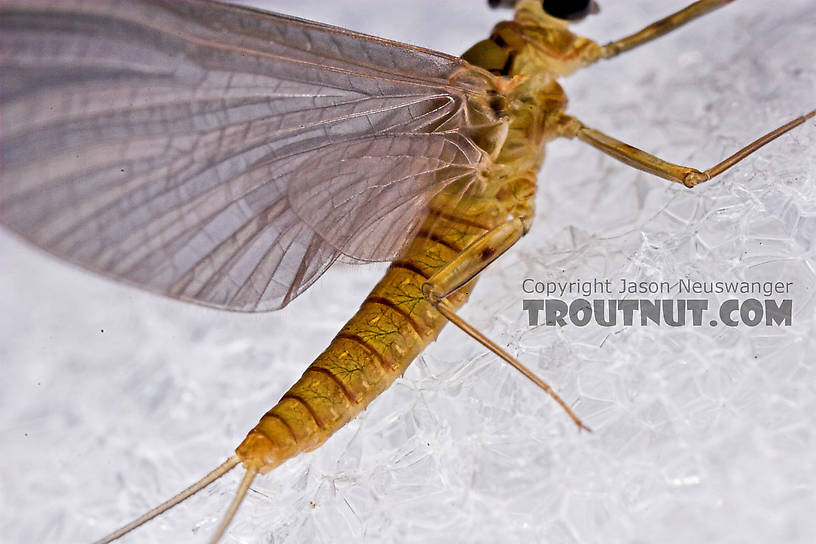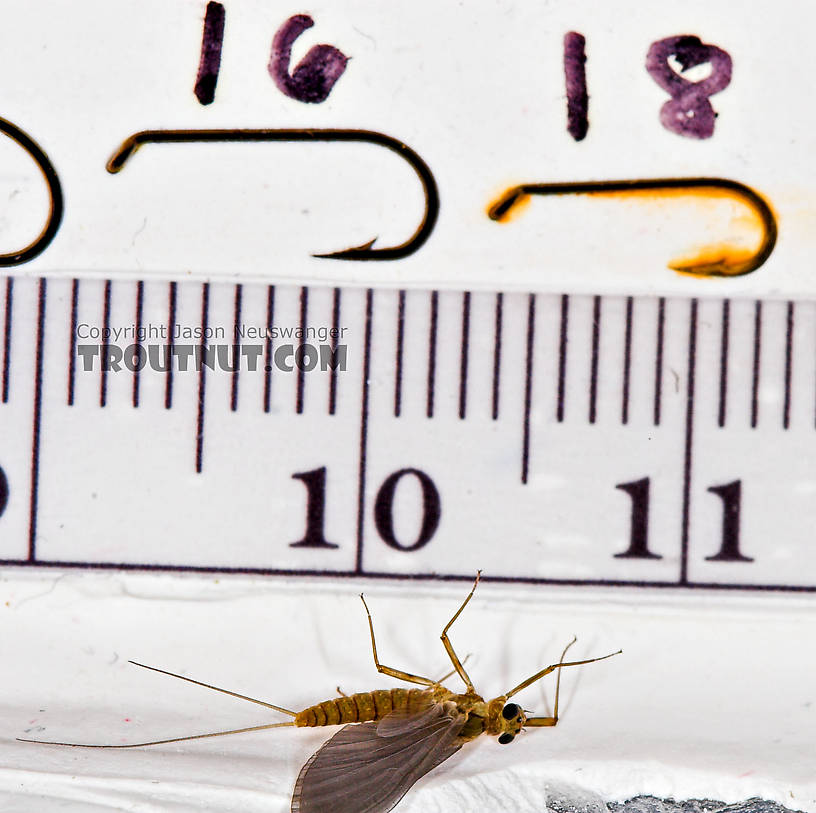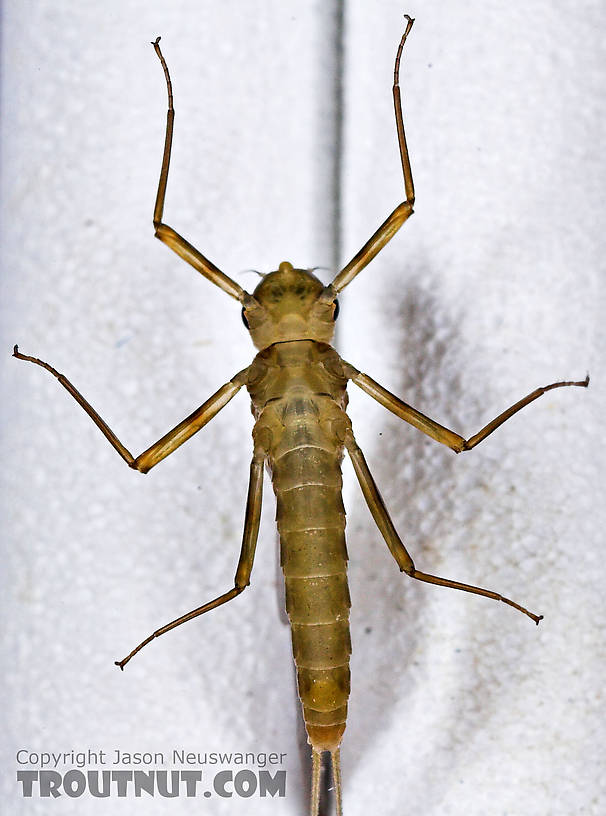Blog & Latest Updates
Fly Fishing Articles
Insects by Common Name


Female Epeorus frisoni Mayfly Dun Pictures
Classification
Kingdom
Animalia (Animals)
» Phylum
Arthropoda (Arthropods)
» Class
Insecta (Insects)
» Order
Ephemeroptera (Mayflies)
» Genus
Epeorus (Little Maryatts)
» Species
frisoni
I collected this female dun together with a female spinner, a male dun, and a larger, damaged male dun.
This mayfly was collected from Mystery Creek #23 on September 6th, 2006 and added to Troutnut.com on October 3rd, 2006.
Recent Discussions of this Dun
Probably E. fragilis, but... 1 Reply »
Both the process of elimination and reading published descriptions of Eastern Epeorus (pleuralis group) seem to leave fragilis as the only likely possibility for this specimen (as well as the related ones--#630, #631, and #633). The collection date is near the emergence range given for fragilis, and they match the description of this species in nearly every way except one: size.
Burian, et al. (2008) provide a key for Northeastern Epeorus adults that uses size as a significant means of distinguishing between fragilis and frisoni. They describe fragilis as less than 6.80mm. All of these specimens are larger, ranging from about 7mm-8.5mm. This puts them squarely within the range given for (the very similar) frisoni--6.83mm-9.42mm.
Although frisoni is described as being lighter in color than these specimens, two comments from the Burian publication are particularly interesting in this regard:
It would probably be reasonable to place these specimens as (size-anomalous) fragilis under the current taxonomic scheme. However, the stream in which they were captured seems to fit the above criteria pretty well. It would be very interesting to see someone like Konchu investigate this population further.
ReplyBurian, et al. (2008) provide a key for Northeastern Epeorus adults that uses size as a significant means of distinguishing between fragilis and frisoni. They describe fragilis as less than 6.80mm. All of these specimens are larger, ranging from about 7mm-8.5mm. This puts them squarely within the range given for (the very similar) frisoni--6.83mm-9.42mm.
Although frisoni is described as being lighter in color than these specimens, two comments from the Burian publication are particularly interesting in this regard:
At least one of us believes that a thorough search of suitable, higher elevation, cold streams in the White Mountains of New Hampshire, the Adirondacks of New York, and the Gaspe area of Quebec should result in the discovery of several new records [of frisoni].
The habitat association of E. frisoni with cold (even in summer), high gradient, minimally disturbed streams at or above 1200' (~365m) could be used to identify some of the best high elevation lotic habitats for conservation purposes. Variation among the New England subset of the eastern Nearctic genus Epeorus strongly points to the need for a full revision of this genus.
It would probably be reasonable to place these specimens as (size-anomalous) fragilis under the current taxonomic scheme. However, the stream in which they were captured seems to fit the above criteria pretty well. It would be very interesting to see someone like Konchu investigate this population further.
Start a Discussion of this Dun:
Top 10 Fly Hatches
Top Gift Shop Designs
Eat mayflies.
Top Insect Specimens
Miscellaneous Sites
Troutnut.com is copyright © 2004-2024 Jason
Neuswanger (email Jason). See my FAQ for information about use of my images.
 privacy policy
privacy policy

